A couple weeks ago Disney sent out some of their animators on a press tour to promote Disney’s return to traditional 2D hand drawn animation. St. Louis members of the press and I were lucky enough to interview two of the animators who worked on the film. Both seemed very enthusiastic about Disney’s return to its own roots. This kind of dedication to the craft only proves that is back on the right track, and that we have many more classics to come still from the studio.
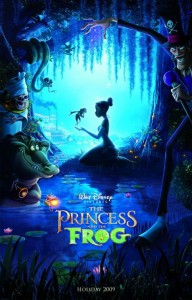 We all really enjoyed Princess and the Frog.
We all really enjoyed Princess and the Frog.
Bruce Smith: You know, we enjoyed doing it as much as you enjoyed watching it.
Randy Haycock: We feel like this was that kind of a movie we made when we were in our first golden age here. Well, in my generation. I started on Aladdin, and yeah this definitely feels like that type of movie. Little Mermaid, Beauty and the Beast kind of thing. We’re excited about it.
You have two St. Louis people in it as well! John Goodman and Jennifer Lewis.
Bruce Smith: Oh, are they from St. Louis? Jennifer Lewis is great…she is…a character!
Randy Haycock: She just got nominated for an Annie Award. Which is a prestigious animation award. It’s our Oscars basically. So did Bruce actually.
Bruce Smith: She got nominated for doing the voice of Mama Odie.
Randy Haycock: She’s the new fairy godmother I tell ya. She had a lot of fun with it.
Bruce Smith: She used to come by the studio, and she’d spend all day at the studio. Just kinda hanging out singing, shaking hands .
Randy Haycock: She’s just a great entertainer. Even as herself she is just a very entertaining person.
What did you guys do after Disney dropped its 2D animation for a while. Did you guys move over to the 3D projects?
Randy Haycock: I did, I actually I learned how to use the computer and I worked on Chicken Little as an animator and Meet the Robinsons. But I tell ya, as soon they made the announcement that we were going to do hand drawn again I was –phew- first in line at the door. Got my little drawings and I’m ready to go.
Bruce Smith: There’s nothing like hand drawn animation. I had left the studio right in the middle of Home on the Range. I had my own studio and I was producing a TV show called, The Proud Family I had created for the Disney Channel. So, in that whole time when that transition happened, it was right when I had left. So, I didn’t get a chance to hear all the zombies in the hallways stories. Desks getting shipped out and stories like that. I’d call and say “They did what? What!?”
Randy Haycock: Yea, they were selling the desks. I had to buy my own desk just to keep my desk. I had been sitting at that desk for ten years. It was built in the forties, so this was a really great piece of furniture.
Bruce Smith: So, yea I got the phone call pretty much right after we did a movie based on the series. Literally, right after we got done doing the movie I got a call from John Musker saying, “Hey! Got a project want you to come by and check it out we are bringing this whole thing back and want you to be a part of it.”
Was there ever a feeling that 2D animation would never come back to Disney?
Randy Haycock: Absolutely, When you see the desks going out the door you’re like “We’re done. It’s over.” And you know it was declared by several Hollywood executives that said, “Hand drawn animation is dead. No one wants to see this anymore.” What they didn’t get, which I think is important, it had nothing to do with the medium we were using. They talked about it like it was black and white versus color. “Oh now it’s new technology nobody wants to see that, they want to see the frills of CG animation.” We always said it had nothing to do with that, we needed to tell better stories. We weren’t making the best movies at the time, and we were all aware of it. We didn’t have control of it those of us, Bruce and my position, we didn’t have control over the type of movies we were making. We were just trying to make a living at the time. We all wished we could make better stories.
Really it all came down to having someone in charge who had a passion for animation. That is who John Lasseter is. When they put him in charge of the studio we were really ecstatic. We knew he loved what he did. It wasn’t a job that he did while hoping to get a better job. It was the thing he wanted to do more than anything, and he has a real passion, not just for animation but for Disney. He loves that classic legacy. This was where he started. He was an animator on Fox and the Hound. He got his start as an animator at Disney. He definitely appreciated the value of hand drawn animation. He said, “If anybody should be doing hand drawn animation, it should be Disney.” So, when it was announced he was in charge of the studio, it was announced that we would be doing hand drawn films again.
Boy the change in mood there, especially from those of us who got our start there. We went from, “What are we going to do?” to “We know exactly what we want to do!”. Fortunately, we got the kind of film to give us that platform to do the movie we felt like we should be doing.
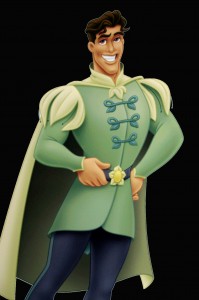 Hand drawn animation has a beauty that can’t be achieved by CG. As animators it must have been fun to draw a place like New Orleans, because of the potential and visual flourishes it allows.
Hand drawn animation has a beauty that can’t be achieved by CG. As animators it must have been fun to draw a place like New Orleans, because of the potential and visual flourishes it allows.
Bruce Smith: This was our chance to do first off an American, which we hadn’t really done. So we had a chance to introduce original characters from an African American point of view which we hadn’t done before. We really wanted to reintroduce this medium back to our audience. We tapped into characters and environments that would be a fresh take. So telling it in New Orleans was nice. The city itself is beautiful and has such character. Our Art Director on the film, Ian Gooding, made a true effort in making New Orleans as a city a character in the film. When you do a film like Bambi, the detail is less. It is more about color and what you are dealing with in a different environment. In this there is a city, ornate city, it is a fantastic way to do detail, to let our audience know that we did research to bring you this.
Randy Haycock: It was really flattering when someone from New Orleans who saw the film said to us, “I kept watching the movie and saying I know that place!” Because all the settings in the New Orleans scenes are based on actual places. The French Quarter, the graveyard, the church, they are all based on actual landmarks in the city. It was exciting for people to see that. I feel the same way as Bruce, the detail is great. To see this finished scene of the two little frogs hopping along behind Mama Odie in her little house. There was a little rotten strawberry sitting on the floor. I was wondering who thought of putting that little detail in there. It is that kind of attention to detail that really makes the movie special.
There was a feeling from everyone on the film that we really had something to prove. We had to prove to people that it wasn’t true that hand drawn was a dead medium. That we could tell a great story and do it really well, creatively and artistically craft a beautiful story that looked great, had great characters, that would make you laugh and cry, do all the stuff that a really good movie is supposed to do. It is important to mention the music. We were doing a film that fell back on the best of Disney legacy. These musical fairy tales that we have been doing since Snow White, but to do it in a fresh way. You know things like having an African-American princess, and setting it in a contemporary city. All these kinds of ideas drove all these other elements that made the story be fresh as well. If you are going to do a movie in jazz age New Orleans, you can’t do typical Broadway style songs. You have to do jazz, zydeco, gospel, blues, all these great music forms that have come out of that area of our country. These things set it apart making it feel like a true American fairy tale.
Why do you think it took so long to make an African-American Princess?
Randy Haycock: We really don’t go sitting in a meeting saying, “We haven’t done a Chinese princess yet. So why don’t we set a movie in China so we can do a Chinese princess.” What happens is, for example Mulan, somebody tells us about this great legend out of China about this girl who disguises herself as a man so she can fight in a war, and we say it sounds like a great story, let’s develop it. There we get a Chinese protagonist.
In the case of Princess and the Frog, the ideas came about like this, first of all the Ron and John wanted to do a hand drawn film. John Lasseter loves New Orleans, it is a really special and unique place in the United States, it is a city like none other that we have. There is such a diversity of culture there that is unmatched anywhere else. Its got kind of a magical feel to it. So, we thought this would be a great setting for a film.
The next thing was that the idea was pitched to John Lasseter, and he loved the idea and said, “Why don’t we set this story in New Orleans?” Well, once you have your idea, you know who the characters are. We know we wanted a girl who didn’t begin as a princess, but a girl who began as a working class, very strong principles and strong work ethic. We kind of thought if we are setting this film in Jazz Age New Orleans, what kind of person would represent this? And we thought it would be best to make her an African-American character. So, it kind of came about organically because of the needs of the story.
So, we don’t go out looking for an ethnic group. We look for the great stories. Thankfully, we have managed to cover quite a few ethnic groups over the years. We finally have finally managed to find a great story for an African-American.
She’s a good role model for women, in the fact that she isn’t just waiting around for her prince.
Bruce Smith: Well that is the great thing about Ron [Clements] and John [Musker], when they do their films, when you think about The Little Mermaid for instance. That character was the ultimate rebellious teen.
Randy Haycock: It spoke to that audience. The Little Mermaid was doing the same thing, it was falling back on an old form. It had been thirty years before The Little Mermaid since we had done a musical fairytale. We needed to make it fresh for a contemporary audience. That was the character that came out of that attempt.
Bruce Smith: It was making characters that the audience could identify with. Great characters make great stories. We really wanted to take Tiana, and put inside of elements that would allow us to tell a great story.
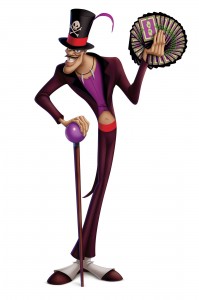 I’m glad you didn’t just make her a teenager, but a grown woman who is very modern. It is charming that you set it in the 1920s. She could be today…
I’m glad you didn’t just make her a teenager, but a grown woman who is very modern. It is charming that you set it in the 1920s. She could be today…
Bruce Smith: I think the key with Disney films is that especially more recently we try to put traits into these characters that people can relate to. So that they aren’t too old school, but have some real modern traits that you can relate to as a character and share their journey.
Randy Haycock: The goal is that our films are timeless. We don’t want it to be so contemporary. Sometimes I put on an older movie for my kids and they go, “Oh that’s an old movie, that is about the old days. I want to watch movies about kids now.” They don’t feel that way about Disney films. You know when we are at our best we are making films that last. I put on Snow White for my three and a half year old, and she loves that movie! It was made in 1937. I can’t name you another movie in 1937 that she would sit through. That is the special quality of a Disney film. And she loves Princess and the Frog thankfully. I hope 75 years from now she’s sitting her grandkids down in front of the TV telling them how she loved this movie when she was a little girl. When Disney is at its best it has that special quality that lives on forever.
Was there any pressure creating an African-American princess? Getting that look right, maybe sensitivity to hues, etc? Creating a non-stereotype?
Bruce Smith: The research that we involved in creating this sort of film is not unlike research that we have done in any film. All of those issues come to play with any character of any type of background. So, naturally we get all the animators together, and they throw out their ideas of what they think the character should look like. Even in the book, the making of our movie Princess and the Frog, you’ll see various versions of Tiana throughout the book. It is everyone’s job to come up with that great appealing design. That we feel like people could relate to. Whether she is too light or too dark, we just feel like how does this character feel to us? As an African-American, I would certainly have notes about how the character may feel as opposed to how light or dark they are. To me it was more important that I feel the character of Tiana when I see it. It’s about personality.
Just as a sidebar, I had to deal with this issue in a film once. I directed a film called Bebe’s Kids. All three of the kids in that movie I intentionally made three different shades of African-American. I was approached by a woman who asked, “You made the kids all different colors, were you trying to suggest they had different daddies?” I was like, no, I have four brothers and a sister, none of us are all the same shade at all. I’m probably the darkest of the Smiths, but we have the same daddy, we have the same momma. That’s just how we come. We come in every shade of brown. Whether it is way at the top of the scale or way at the bottom, we come that way. It is fine. So, I was ok with exploring the different shades and tones of every black person in the film.
Randy Haycock: To be completely truthful, it is what we are doing with every character in the film. With the frogs we looked at Naveen’s and asking if it should be a darker shade of green. What color should his spots be compared to Tiana? They aren’t the same color frogs if you look. What we are looking at is what aesthetically is going to look best on the screen. It is more of an artistic choice than an ethnic choice.
The art was great. There detail in the art. One scene with powder sugar being put on a beignet. It was so vibrant. Is there special technique you use?
Bruce Smith: Just all special effects…
Randy Haycock: It’s called talent!
Bruce Smith: What’s funny about that is I remember seeing that scene for the first time in color, and I remember thinking “ I want to eat those!”. They looked amazing, they looked like real beignets. Every element had to look good to make this film. That is what happens when you throw great talent into a Disney film.
Randy Haycock: You want people to be completely enveloped by the movie. You want people to feel like they are in that world. You don’t want them to feel like there is a screen between them and the story. You want them to feel like they are walking around the streets of New Orleans witnessing all this stuff happening. I think Ian deserves a lot of credit for his art direction. James Finch who did the production design, and also Sonny Apinchapong who was head of backgrounds. They painted the backgrounds, just beautiful technique and style.
We watched all these really talented people work at the height of their ability. We all had great passion because we all knew we had something to prove. So, we really worked hard to prove to people that we could make a great Disney film today. It can be hand drawn and people would love it.
Did they send the production at all to New Orleans?
Bruce Smith: Most of the key artists. In the beginning of the film you do a lot of those research trips. So it’s the director and the supervisors of certain departments that may carry the direction. Backgrounds, the art director, our job as animators is we soak of the environment through their research. I went down to New Orleans also, and examined the type of places I though Facilier would be hiding and harboring.
I think the most part we do our research, and a lot of the key artists go down and we absorb their research. Our main job is being the actors in the film. We are the actors with the pencils. We pull this performance out in this environment.
The characters that you guys animated. I liked that Facilier was long, lean and slinky, but below his vest you see a little bit of belly sneaking out. That’s such a nice touch.
Bruce Smith: Well, that was actually inspired by….
Randy Haycock: He went and put a really tight vest in front of the mirror….
Bruce Smith: I was like I got a little pouch! (laughs) Gotta work on that. It was fun, I should put that in the character. Really it came from the idea that the director said he’s sort of a guy who is trying to fit into New Orleans, he likes to dress the part of a gentleman, even though he is anything but. So, I was like OK, what can I do to get this? So, I thought this voodoo guy can’t have a shirt, and have his belly stick out a bit to show his age. I just had fun with that actually. When I first drew him and did the color model of him, they asked, “Is that his shirt he is wearing? “ and I was like, “No, that is his skin, that is his…belly.” So, when we finally saw the model we thought it looked pretty cool. It’s kind of exotic. That is some of the fun of creating him. I’m glad you noticed that detail.
I did the initial design, and we finally cast Keith David and the final design came from that. I put the gap in his teeth, because when Keith David when he would be behind the microphone recording he did all of his lines with a big cheesy grin. So, I thought I’d draw that in on the character. It just inspired a piece of the character.
Randy Haycock: For Naveen, the first thing that they told me was that he had to be a handsome prince. In the beginning we are all drawing over each others characters, trying to find that right character, that right design. Trying to make sure they seem like they fit in the same world. It was a bunch of guys supervising the animators doing these drawings. So, we were kind of guessing what women think is a handsome prince. The goal is to have all these girls and women who see this movie fall madly in love with Prince Naveen by the time the movie is over. I always joked that I wanted them to go home and say to their boyfriends or husbands, “I wish you were more like Naveen.” Or maybe if the guy is lucky they’ll say that he is just like Naveen.
So, that was the goal, we had to make this handsome prince. I took the drawings home to my teenage daughter, and I laid them out on a table and asked which of these guys would she go on a date with? She would kinda go, “I like him, he’s cute. Nah, that one not so much..” I’d let her kind of narrow it down. You can thank her for her Jonas Brothers eyebrows.
We also wanted him to feel exotic. You had to feel like he belonged to a completely different world than Tiana. Maldonia is a completely made up kingdom, but we knew we wanted exotic. How can he look exotic and still act like this kind of boy next door. I pictured all the places I considered exotic from my hometown Colorado boy point of view. I looked at actors and models from the Mediterranean, from South America, and India and took the best looking of those, and captured kind of a neat look. Something that might fit into New Orleans, which is a melting pot of cultures.
The next challenge, as many women know it isn’t just looks that attracts women to men, he had to have an attractive personality. Something I liked about the character is that he isn’t perfect. He’s flawed, he is a bit irresponsible, self centered, but at the same time he has this real hunger for life. He’s excited, he loves jazz music, he just really enjoys life and I think that is appealing to people despite his flaws.
The final challenge was, how do we make him look like a frog? What elements can you take from this good looking guy and put on a frog? We don’t look at frogs as good looking creatures. Frogs have big eyes and big mouths, so I said let’s take those, but how do you translate Jonas Brothers eyebrows to a frog? He’s got these pearly white teeth, and do frogs have teeth? Ah, well it doesn’t matter we are going to go ahead and do it. We did these things where we created impressions of eyebrows, by making dark patches over his eyes. We did give him pearly white teeth, and I was like it’s a cartoon right? We did bring in real frogs to research. We brought this frog in from Africa, called a Pac Man Frog, and if you see the frog you’d say it looks like Pac Man. That thing would open up its huge mouth which is like half of its body, and there were little rows of teeth. So, some frogs have teeth. They may not be as pearly white as his, but zoologists will be happy to know that some frogs do have teeth.
About Bruce Smith:
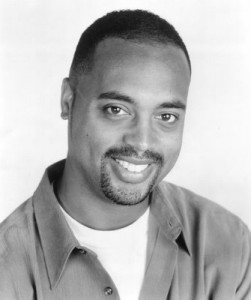 BRUCE SMITH (Supervising Animator) first joined Walt Disney Animation Studios in 1988, working as an animator on the genre-bending global hit Who Framed Roger Rabbit?. His relocation for work at Disney was nonexistent, as Smith is a native Los Angeleno, having attended the city’s George Washington High School and studied character animation at the California Institute of the Arts in nearby Valencia.
BRUCE SMITH (Supervising Animator) first joined Walt Disney Animation Studios in 1988, working as an animator on the genre-bending global hit Who Framed Roger Rabbit?. His relocation for work at Disney was nonexistent, as Smith is a native Los Angeleno, having attended the city’s George Washington High School and studied character animation at the California Institute of the Arts in nearby Valencia.
Bruce’s affinity for the art of animation began quite early, in grade school, in fact. When his teacher announced that anyone providing requested artwork for a classroom poster would be exempt from the upcoming pop quiz, Smith put two and two together…if he became an accomplished illustrator, he’d never have to take a pop quiz. His reasoning worked—his handiwork was regularly featured on the school’s posters, and he never had to take a surprise test again. Later, he received the moniker of Most Artistic at Washington High.
Following his graduation from Cal Arts, he worked for several animation houses before coming to Disney.
In his current capacity as Supervising Animator for the character of Dr. Facilier (the villain of The Princess and the Frog), Bruce serves as the ‘lead actor’ for the character, setting the drawing style of Dr. Facilier and guiding his performance throughout the film, while also overseeing his staff of animators to ensure the high level of quality that has come to be expected from the Walt Disney Animation Studios.
Bruce continues to reside in Los Angeles with his wife. The couple has three children (two in college and one in high school) and one dog.
About Randy Haycock:
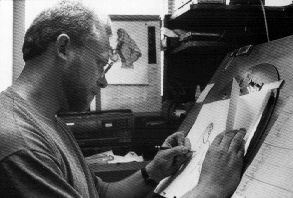 RANDY HAYCOCK (Supervising Animator) would have been born in his hometown of Elk Springs, Colo., but rather came into this world in nearby Rangely—seems Elk Springs was too small to have its own hospital. Haycock grew up in another Colorado town called Grand Junction, and aspired to be a paleontologist, then a comic book artist—but after seeing the classic “Fantasia” at age 15, he set his sights on becoming an animator for the Walt Disney Animation Studios. He got his wish several years later, after attending Brigham Young University and California Institute of the Arts.
RANDY HAYCOCK (Supervising Animator) would have been born in his hometown of Elk Springs, Colo., but rather came into this world in nearby Rangely—seems Elk Springs was too small to have its own hospital. Haycock grew up in another Colorado town called Grand Junction, and aspired to be a paleontologist, then a comic book artist—but after seeing the classic “Fantasia” at age 15, he set his sights on becoming an animator for the Walt Disney Animation Studios. He got his wish several years later, after attending Brigham Young University and California Institute of the Arts.
Before Haycock joined the Disney team in February 1992 as a rough in-betweener on the feature “Aladdin,” he gained experience working in character layout/character design and development on an animated television series. Following “Aladdin,” Haycock served as an animator on a succession of the Studio’s features: “The Lion King,” “Pocahontas,” “Hercules” (supervising on Baby and Young Hercules), “Tarzan” (Supervising on Clayton), “Atlantis: The Lost Empire” (supervising on Princess Kida), “Treasure Planet,” “Chicken Little” and “Meet the Robinsons” (supervising Franny, Fritz, Petunia, Laszlo and Tallulah). Haycock animated Goofy on the short “How to Hook Up Your Home Theater” and served as visual development artist on the short “The Little Matchgirl.”
Currently, Haycock is supervising animator for Naveen in “The Princess and the Frog,” working with the directors to ensure that Naveen’s performance matches their vision.
Haycock, his wife, five children and their yellow Labrador all live in Santa Clarita, Calif.
